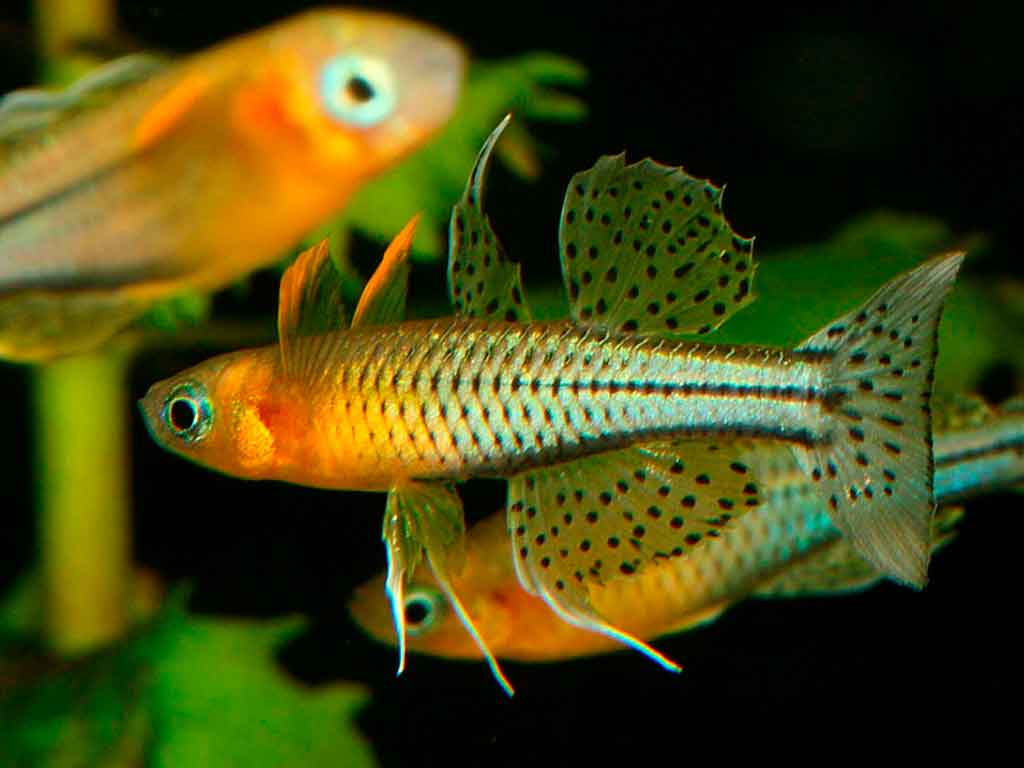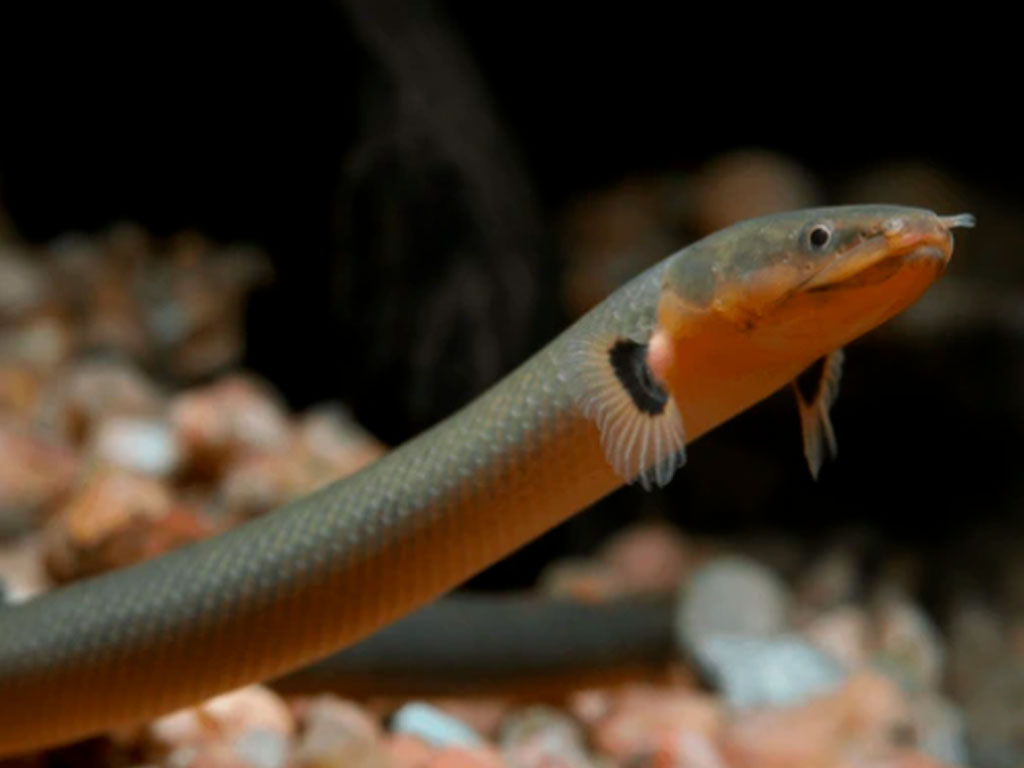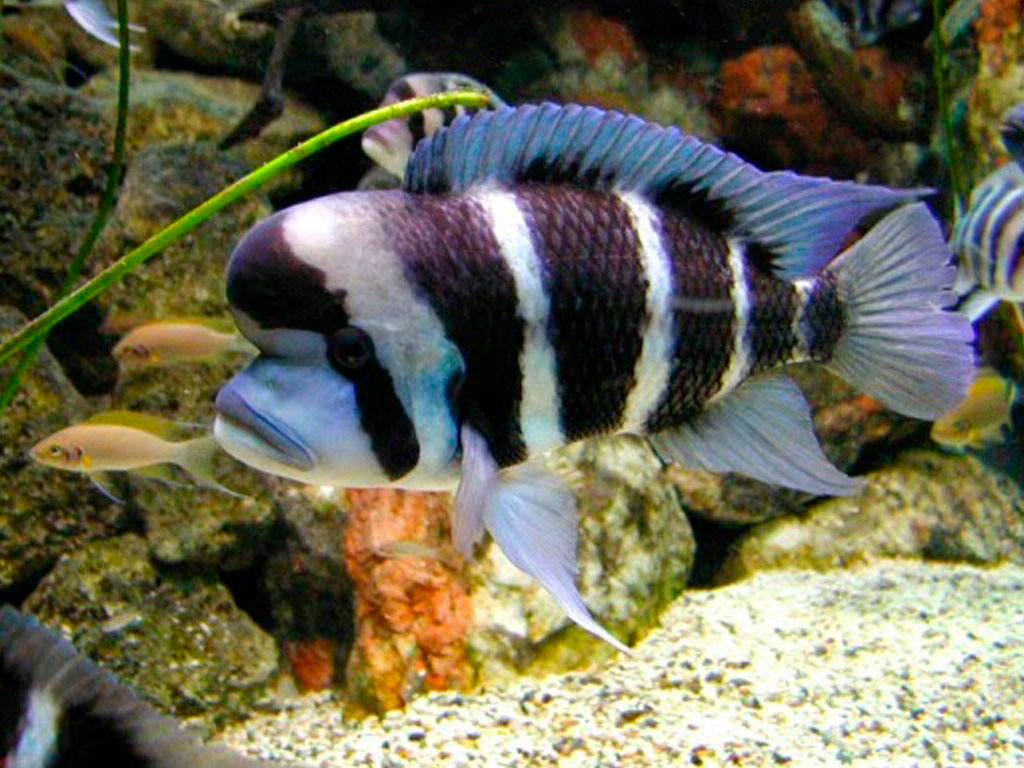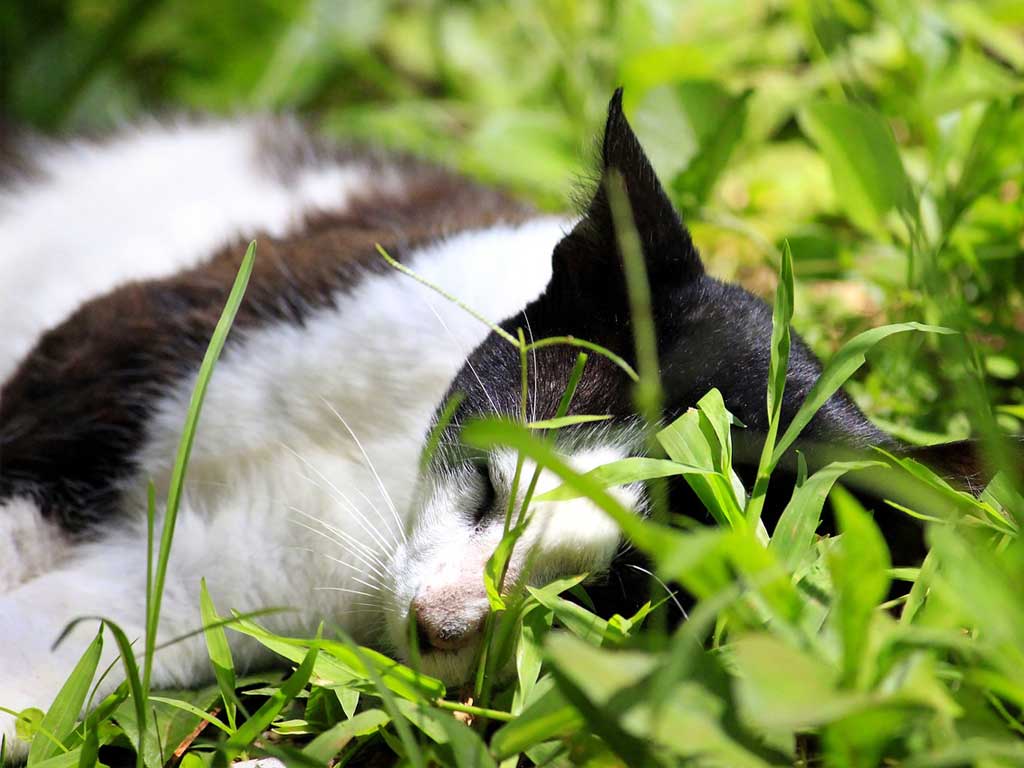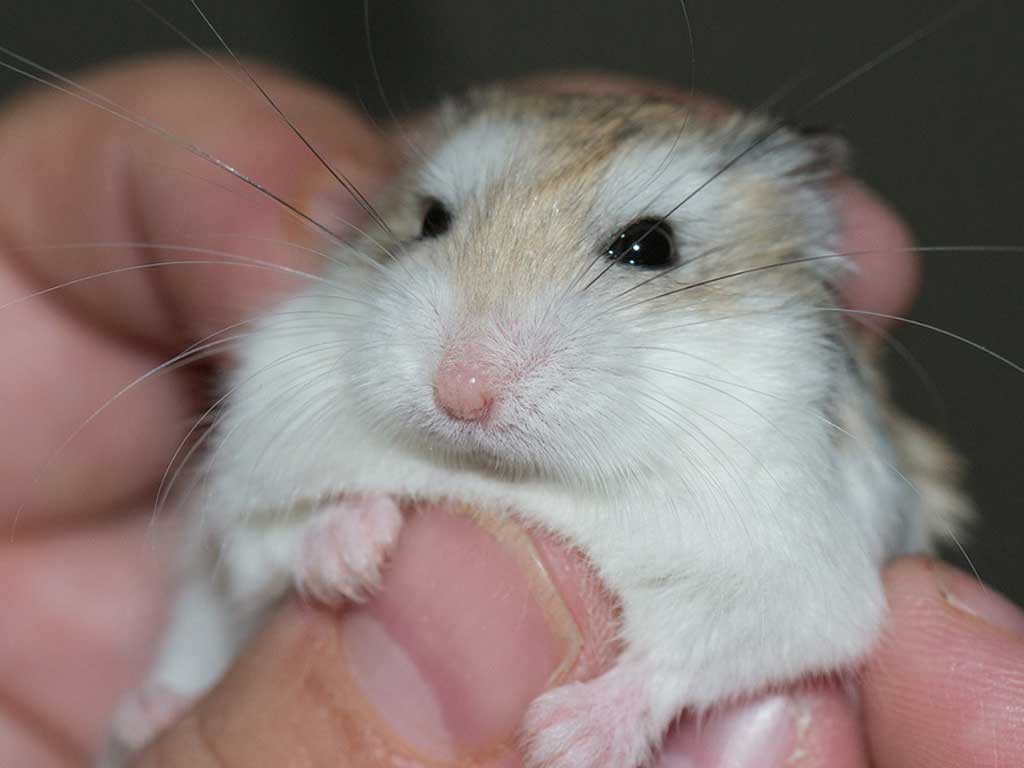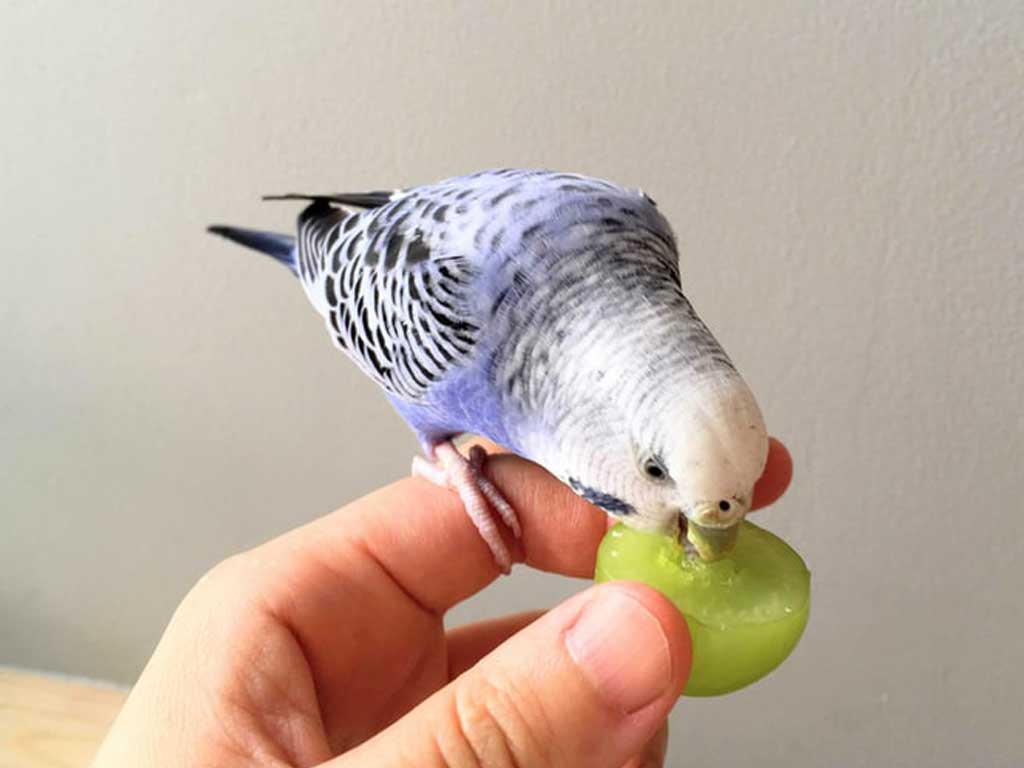In the fascinating universe of fishkeeping, there are aquatic gems that, though small in size, possess an overflowing charisma and beauty. One of these gems is, without a doubt, Pseudomugil gertrudae, also known as the spotted blue-eye rainbowfish. This tiny yet vibrant fish, native to the freshwaters of New Guinea and Australia, is an exceptional candidate for those wishing to add movement, color, and unique behavior to their tanks, especially in planted or aquascaped setups.
Its peculiar swimming style, resembling the flutter of a butterfly, its electric blue eyes that catch the light, and its relatively easy maintenance have made it a favorite among both beginner and expert aquarists. In this definitive guide, we will explore every facet of its care: from the ideal aquarium setup and parameters, to its diet, its fascinating social behavior, and the secrets to successful breeding. Get ready to discover why this little fish makes such a big impact.
What is Pseudomugil Gertrudae? Origin and Characteristics
Pseudomugil gertrudae belongs to the rainbowfish family, a group known for its dazzling colors. It comes from river systems, slow-moving streams, swamps, and lagoons in the region of Papua New Guinea and northern Australia. This natural habitat, often dense with vegetation and featuring clean, clear waters, gives us the first clues about its needs in captivity.
Its main calling card is its size. Rarely exceeding 3 to 4 centimeters (about 1.5 inches) in length, it is an ideal fish for nano aquariums or medium-sized tanks starting from 40-50 liters (10-15 gallons). Its body is slender and slightly translucent, with a base coloration that can range from a pale yellow to a brownish-orange hue, but its details are what truly make you fall in love:
- Blue Eyes: Its most iconic feature is the bright, iridescent blue color of its eyes, which seem to glow with their own light and contrast beautifully with the rest of its body.
- Spotted Fins: The males, in particular, display spectacular dorsal and anal fins. Against a whitish or yellow background, they sport a pattern of black dots (spots) that gives them their common name, Spotted Blue-eye.
- Unique Swimming: Unlike most tetras or rasboras, the gertrudae has a very particular way of swimming. It keeps its pectoral fins held high, almost like wings or an elephant’s ears, beating them rapidly. This swimming style makes it a captivating fish to watch.
The Perfect Home: Parameters and Aquarium Setup
Replicating its natural environment is the key to success in keeping these fish healthy and active. They appreciate a well-planted aquarium that offers them shelter, but it is crucial to leave open areas for swimming.
Water Parameters
They are relatively tolerant fish but thrive in stable conditions. The key is water cleanliness; they are sensitive to the accumulation of ammonia and nitrites.
| Parameter | Ideal Range | Notes |
| Temperature | 23°C – 28°C (73°F – 82°F) | They are comfortable in the standard tropical range. |
| pH | 6.5 – 7.5 | They prefer neutrality but tolerate slight variations. |
| Hardness (GH) | 5 – 12 dGH | They adapt to soft or moderately hard water. |
| Ammonia/Nitrite | 0 ppm | Intolerant. A well-cycled filter is essential. |
| Nitrate | < 20 ppm | Keep low with weekly water changes of 25-30%. |
Aquarium Setup
- Minimum Size: A 10-gallon (40-liter) aquarium is a good starting point for a small shoal of 6-8 individuals.
- Filtration: Efficient but gentle filtration is required. A sponge filter or a hang-on-back filter with an adjustable flow are excellent options to avoid creating excessive currents that could stress them.
- Decor and Substrate: They are perfect for aquascaped tanks. They do not harm plants. Combine densely planted areas with fine-stemmed plants (like Rotala or Myriophyllum) and mosses (Java moss or Christmas moss), which will also serve as a spawning site. Leave a clear front area for them to swim and show off. Driftwood and roots complete the landscape and provide them with security.
- Lighting: Moderate lighting that enhances the fish’s colors and allows for plant growth will be sufficient.
Behavior: A Peaceful and Active Shoaling Fish
The Pseudomugil gertrudae is a shoaling fish that must be kept in groups of at least 6 individuals, with a group of 8 or more being ideal. Kept alone, it will become shy, stressed, and will not display its natural behavior.
They are inhabitants of the middle and upper sections of the aquarium. They spend most of their time exploring the surface for food, which makes them an excellent complement to bottom-dwelling fish like corydoras.
The males are the stars of the show. They spend the entire day performing courtship dances, flaring their fins to their fullest extent to impress the females. Although they chase each other in constant competition for female attention, these confrontations are pure display. They position themselves face to face, vibrate, and size each other up, but they are not aggressive or territorial in the strict sense. Keeping several males together is peaceful and, in fact, necessary to observe their full range of natural behaviors.
Diet and Feeding for an Active Fish
In the wild, they are opportunistic micro-predators. They primarily feed on zooplankton, small insects, and larvae that fall onto the water’s surface. Their upward-facing mouth is a clear adaptation to this lifestyle.
In the aquarium, they readily accept a varied diet:
- Base Food: A high-quality commercial flake or micro-pellet food should be the staple. It is crucial that the pellet size is very small, as their mouths are tiny.
- Live or Frozen Food: To bring out their best coloration and vitality, it is essential to supplement their diet. They will enthusiastically accept mosquito larvae, daphnia (water fleas), grindal worms, and, above all, freshly hatched baby brine shrimp, which is one of their favorite treats.
Breeding: The Challenge of Raising the Blue-Eyes
Breeding Pseudomugil gertrudae is a rewarding project. They are continuous spawners, meaning the females lay a few eggs each day rather than in one large batch.
- Sexual Dimorphism: Distinguishing males from females is simple. Males are more colorful, have much larger, extended dorsal and anal fins with a very pronounced black-spotted pattern. Females are duller in color, with short, rounded fins.
- The Breeding Process:
- Breeding Tank: A 5-gallon tank can be set up with a mature sponge filter, no substrate for easy cleaning, and plenty of “spawning mops” (made from acrylic yarn) or Java moss.
- Conditioning: Feed a trio (one male and two females) with plenty of live food for one to two weeks.
- Spawning: The fish will deposit their adhesive eggs on the moss or mops. You can remove the mops daily to a separate hatching tank to prevent the parents from eating the eggs or fry.
- Hatching and Fry Care: The eggs hatch in 10-14 days depending on the temperature. The fry are extremely small and for the first few days will feed on infusoria present in a mature aquarium. You can prepare infusoria cultures or use commercial products. After a few days, they will be able to accept baby brine shrimp.
With good nutrition and a stable temperature above 25°C (77°F), the fry grow relatively quickly, reaching over a centimeter in their first month of life.
The Pseudomugil gertrudae is much more than just a pretty face with blue eyes. It is a dynamic, peaceful fish with fascinating behavior that brings life to any aquarium. Its small size makes it perfect for smaller projects, and its compatibility with plants makes it the king of aquascaped tanks. If you are looking for a fish that offers a constant visual spectacle, presents an achievable breeding challenge, and fills the upper part of your aquarium with elegance and activity, look no further. The spotted blue-eye rainbowfish is, without a doubt, an exceptional addition that will not disappoint.
(FAQs)
What is the minimum tank size for Pseudomugil gertrudae?
A minimum of a 10-gallon (40-liter) tank is recommended to keep a shoal of 6 to 8 individuals, allowing them enough space to swim.
Are they aggressive fish? Can I keep several males together?
No, they are extremely peaceful. You can and should keep several males together. Their chasing and displays are courtship rituals, and they do not cause real harm to each other.
What do Pseudomugil gertrudae eat?
Their diet should be varied. They accept high-quality micro-pellets or flakes, but it is essential to supplement with small live or frozen foods like baby brine shrimp, daphnia, or mosquito larvae.
Are they compatible with shrimp and snails?
Yes, due to their peaceful nature and small mouths, they are considered “shrimp safe.” They are excellent companions for adult shrimp like Red Cherries and will not bother snails.
How can I tell a male from a female?
Males are much more colorful, with large, extended dorsal and anal fins that display a pattern of black spots. Females have a more subdued coloration and their fins are short and rounded.

